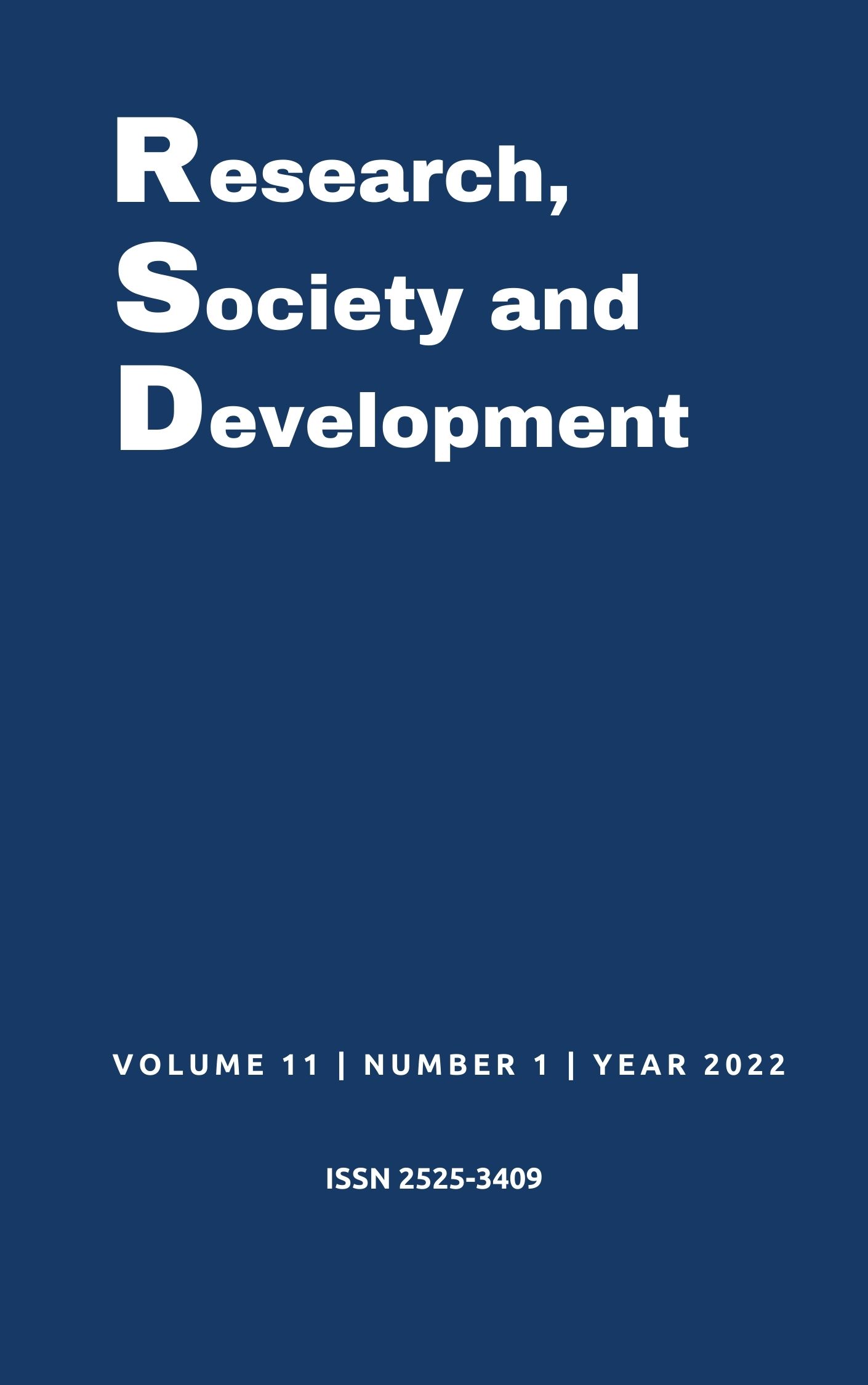Can hair loss be considered one of the consequences of COVID-19?
DOI:
https://doi.org/10.33448/rsd-v11i1.24935Keywords:
Hair Loss, Coronaviruses, Telogen effluvium.Abstract
COVID-19 is an infectious disease caused by the SARS-CoV-2 coronavirus and is capable of affecting different people in different ways. Despite its well-known symptoms and causative agents, its deleterious effects are still considered a mystery, both in terms of its causes and its duration. One of the effects that have caught the attention of scientists is hair loss. The main objective of this work is based on investigating and understanding the relationship between hair loss and a COVID-19, as well as on the most suitable processes for this. In order to achieve the objective, an integrative qualitative and descriptive review was applied, considering the search terms ("COVID-19" [DeCS]) OR ("coronavirus" [DeCS]) AND ("hair loss" ”[DeCS]) on the Publish or Perish platform. The research was carried out on December 8, 2021 and used as bases: Google scholar, PubMed, and Lilacs. Although there is no scientific evidence of a direct relationship between COVID-19 and hair loss, studies demonstrate the existence of an indirect relationship. Symptoms of COVID-19, such as fever and stress (among other psychosocial changes) are considered to enhance the fall, as well as responses to medications used to cure COVID-19. Regarding the treatment, although there are some studies on some medications that are more effective than others, the best option is to seek a specialist, so that the treatment can be assertive and individual.
References
Asghar, F., Shamim, N., Farooque, U., Sheikh, H., & Aqeel, R. (2020). Telogen effluvium: a review of the literature. Cureus, 12(5).
De Amorim, M. B. C., Araújo, D. N., Bezerra, E. F., & Araruna, M. E. C. (2021). Aspectos farmacológicos, terapias propostas e cuidados farmaceuticos no contexto da COVID-19. Journal of Biology & Pharmacy and Agricultural Management, 17(2).
De Oliveira Izumi, M., & Brandão, B. J. F. (2021). Tratamento do Eflúvio Telógeno Pós-Covid 19. BWS Journal, 4, 1-8.
Fernández-Lázaro, D., & Garrosa, M. (2021). Identification, mechanism, and treatment of skin lesions in COVID-19: a review. Viruses, 13(10), 1916.
Iser, B. P. M., Sliva, I., Raymundo, V. T., Poleto, M. B., Schuelter-Trevisol, F., & Bobinski, F. (2020). Definição de caso suspeito da COVID-19: uma revisão narrativa dos sinais e sintomas mais frequentes entre os casos confirmados. Epidemiologia e Serviços de Saúde, 29.
Kowalik, M. M., Trzonkowski, P., Łasińska-Kowara, M., Mital, A., Smiatacz, T., & Jaguszewski, M. (2020). COVID-19—Toward a comprehensive understanding of the disease. Cardiology Journal, 27(2), 99-114.
Mieczkowska, K., Deutsch, A., Borok, J., Guzman, A. K., Fruchter, R., Patel, P., & Halverstam, C. P. (2021). Telogen effluvium: a sequela of COVID‐19. International Journal of Dermatology.
Millett, G. A., Jones, A. T., Benkeser, D., Baral, S., Mercer, L., Beyrer, C., ... & Sullivan, P. S. (2020). Assessing differential impacts of COVID-19 on black communities. Annals of epidemiology, 47, 37-44.
Mohseni Afshar, Z., Babazadeh, A., Hasanpour, A., Barary, M., Sayad, B., Janbakhsh, A., ... & Ebrahimpour, S. (2021). Dermatological manifestations associated with COVID‐19: A comprehensive review of the current knowledge. Journal of medical virology, 93(10), 5756-5767.
Nykolaichuk, K., Kuhta, О., & Senchuk, L. (2021). Pós-covid-19 telogen effluvium. Wha tis the razon? InterConf .302-306.
Olds, H., Liu, J., Luk, K., Lim, H. W., Ozog, D., & Rambhatla, P. V. (2021). Telogen effluvium associated with COVID‐19 infection. Dermatologic therapy, 34(2), e14761.
Rivetti, N., & Barruscotti, S. (2020). Gestão do eflúvio telógeno durante a emergência COVID ‐ 19: implicações psicológicas. Terapia dermatológica.
Rizzetto, G., Diotallevi, F., Campanati, A., Radi, G., Bianchelli, T., Molinelli, E., ... & Offidani, A. (2021). Eflúvio telógeno relacionado à infecção Sars-Cov-2 pós-severa: Aspectos clínicos e nossa experiência de gerenciamento. Terapia dermatológica, 34 (1), e14547.
Sharquie, K. E., & Jabbar, R. I. (2021). COVID-19 infection is a major cause of acute telogen effluvium. Irish Journal of Medical Science (1971-), 1-5.
Sociedade Brasileira de Dermatologia (2021). Manifestações cutâneas associadas à COVID-19 conforme literatura publicada até 30/04/21. sbd.com. Recuperado em 16 de dezembro de 2021, em https://www.sbd.org.br/mm/cms/2021/05/27/nota-tecnicasbd.pdf
Souza, M. T. D., Silva, M. D. D., & Carvalho, R. D. (2010). Integrative review: what is it? How to do it?. Einstein (São Paulo), 8, 102-106.
Starace, M., Iorizzo, M., Sechi, A., Alessandrini, A. M., Carpanese, M., Bruni, F., ... & Piraccini, B. M. (2021). Trichodynia and telogen effluvium in COVID-19 patients: Results of an international expert opinion survey on diagnosis and management. Jaad International, 5, 11-18.
Downloads
Published
Issue
Section
License
Copyright (c) 2022 Juliana Amorim Alfaix Natário; Laís Regina Oliveira ; Caio Caetano de Queiroz ; Maria Vitória Maluf Paula; Carla Beatriz Giopato Moreira; Laura Gualberto Menezes ; Maria Fernanda Okuyama Martin; Nikelly Guareschi ; Fernanda Moreno da Silva ; Diana Gonçalves Lima

This work is licensed under a Creative Commons Attribution 4.0 International License.
Authors who publish with this journal agree to the following terms:
1) Authors retain copyright and grant the journal right of first publication with the work simultaneously licensed under a Creative Commons Attribution License that allows others to share the work with an acknowledgement of the work's authorship and initial publication in this journal.
2) Authors are able to enter into separate, additional contractual arrangements for the non-exclusive distribution of the journal's published version of the work (e.g., post it to an institutional repository or publish it in a book), with an acknowledgement of its initial publication in this journal.
3) Authors are permitted and encouraged to post their work online (e.g., in institutional repositories or on their website) prior to and during the submission process, as it can lead to productive exchanges, as well as earlier and greater citation of published work.


